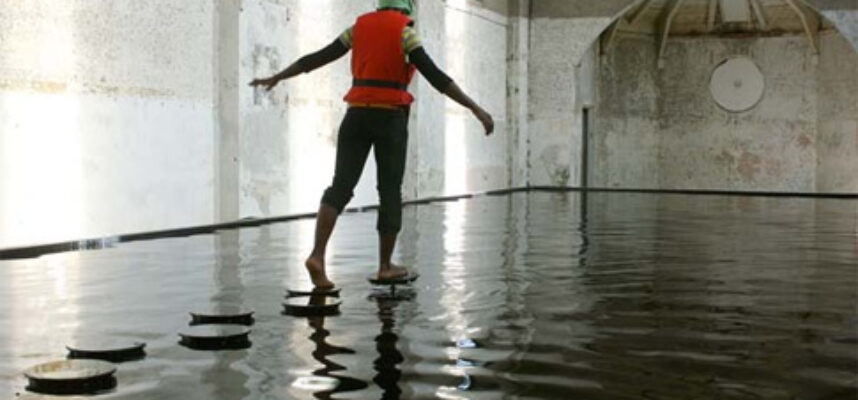25 Jan 2009
0 CommentsA Bright Green Federal Budgetary Stimulus Opportunity
“Efficiency is doing better what is already being done.” – Peter F. Drucker
Is there a green lining in the inevitable mountains of cash being channelled into economic stimulus?
The sequence of September’s ho hum election followed by the almost incongruous state of denial about both environmental issues and the state of our economy by Canada’s Stephen Harper Government, renders the proroguing of Parliament and his rapid policy about face almost exciting to watch. As a result, Tuesday’s budget should prove a lot more interesting than the six months that preceded it.
My post from last year, Finding Negawatts Right on your Doorstep, gave background to show how the EcoEnergy program could significantly reduce our collective residential Greenhouse Gas (GHG) emissions, while simultaneously improving our housing stock and lowering operating costs. As noted, even with the current modest levels of uptake, this is an area where relatively small investments by our Federal and Provincial governments are starting to pay off.
 Proper Economic Stimulus Can Lead To …
Proper Economic Stimulus Can Lead To …
In the context of Canada’s 2009 Federal Budget, there will certainly be significant funds allocated to economic stimulus, almost certainly with the traditional focus on infrastructure projects. As I discussed in my recent post, Playing the Lottery after the Meltdown, I generally favour a laissez faire approach to government. But, considering our current economic situation, signficant stimulus will be essential.
I strongly urge the government to consider channelling some of these fund to two areas:
- bright green investments such as reducing the collective carbon footprint of our homes, as I discuss below.
- in addition, some package of stimulus focused on our future competitiveness by jump starting the knowledge economy, especially startups.
In the Negawatts posting, I didn’t elaborate enough on the relative merits of different approaches to offsetting our carbon consumption (or indeed all Greenhouse Gases). I would draw a parallel to the 3 Green R’s of Reduce, Reuse & Recycle which form a hierarchy in dealing with the solid waste issue, with Reduce (ie. not creating the waste in the first place) being much preferred to Recycle (reducing the impact of waste already consumed). Similarly to this, there are also choices around offsetting our carbon footprint.
Most carbon offsets involve tree planting in some distant, usually tropical, country. While this gives maximum impact, it does nothing for our local output of carbon (GHGs). While planting trees locally is useful, typically the ROI is lower than in warmer climes, if only because trees grow more slowly in Canada. The best approaches would involve a direct reduction of our local carbon use, instead of a mere offset. And that is exactly what residential programs like EcoEnergy home labelling and retrofit achieve.
Therefore, the timing is right to channel the relatively small amount, as compared to the enormous size of the entire stimulus package, needed to transform our residential housing stock. And, the resulting Negawatts we will generate in return, will be a lasting efficiency we can enjoys for decades to come.
 Significant Carbon Reduction
Significant Carbon Reduction



 Brad Templeton
Brad Templeton

 Jonathan @ Victoria/Mile 0
Jonathan @ Victoria/Mile 0 Jonathan sincerely appreciates all of the enthusiasm and support that he received along the way, especially from those individuals and families who deal with Autism every day, yet who found time in their otherwise heavily committed schedules to host local events, come out and meet him, and support him. Likewise, Jonathan is heartened by the many people from all walks of life, who, although they do not have direct connection to ASD, lent their efforts to the run and showed their concern and support for their fellow Canadians.
Jonathan sincerely appreciates all of the enthusiasm and support that he received along the way, especially from those individuals and families who deal with Autism every day, yet who found time in their otherwise heavily committed schedules to host local events, come out and meet him, and support him. Likewise, Jonathan is heartened by the many people from all walks of life, who, although they do not have direct connection to ASD, lent their efforts to the run and showed their concern and support for their fellow Canadians.



 Jim Balsillie
Jim Balsillie Mike Lazaridis
Mike Lazaridis Reed Hastings
Reed Hastings

 Jonathan and Terry with Michael Chong, MP
Jonathan and Terry with Michael Chong, MP
15 Feb 2009
0 CommentsGetting Creative – “Yes We Can” or “Mind the Gap”?
In today’s challenging economic times, it is extra important for governments, academics and individuals to plan our future economic prosperity. Thus, it is timely that Richard Florida and Roger Martin from the Martin Prosperity Institute, Rotman School of Management, University of Toronto this month published Ontario in the Creative Age, which provides a detailed future-oriented policy blueprint.
It sets a policy agenda to help us unleash our full potential in the Twenty-first Century where economic success is increasingly coming from creatively-oriented enterprise versus our traditional strength in routine physical and routine service occupations. The report is backed by research which highlights both our existing strengths and weaknesses including those in education, income and even the gap in our creative/routine job mix compared to our peers. Starting from the base of today, the agenda suggests four main focus areas to drive future prosperity:
Having read this paper, it is encouraging to see such a forward thinking analysis that will certainly drive future governmental, business and economic decision and policy making. With that in mind, and being of an optimistic “yes we can” mentality, I was, however, struck by how very little attention was paid to the biggest gap of all — Funding this agenda.
Without proper funding, our ability to transform our economy in these wise and necessary ways, will go unfulfilled. I’ve written about this “funding gap” numerous times and from different perspectives:
I’m certainly not alone in this concern. Many others in positions of thought leadership have raised the issue of funding of investment, some with very specific policy proposals and others just highlighting the gap:
Make no mistake, having surveyed funding sources for startups and social enterprise, Ontario (and Canada) significantly lags most regions in the US and Western Europe — our primary OECD comparables. The reasons for this are numerous and will be discussed in a separate posting, but this funding gap is our extra hurdle before we can be successful in driving the Florida/Martin challenge to transform Ontario to a creative economy.
And to be clear, this transition to the creative economy needs to be driven by the competitive, market economy. That implies that it will not the primary role of governments to provide the major funding for our transformation. Fundamentally, governments should not be picking winners and losers, but simply equiping market forces to go to work. And, given our long history and culture of relying on governments for answers, it is important to clarify that point. With the right framework in place, businesses and individuals will compete to drive the path to our future.
Thus, as their primary task, it is imperative that our federal and provincial governments develop a strong and co-ordinated policy framework, dealing with taxation, security regulation, and the like, to encourage the private sector to make such investments. And, in our current times of economic stimulus, the extra icing on the cake should be to channel some of those near term stimulus dollars toward growing the creative sector that is so essential to our future economic prosperity.